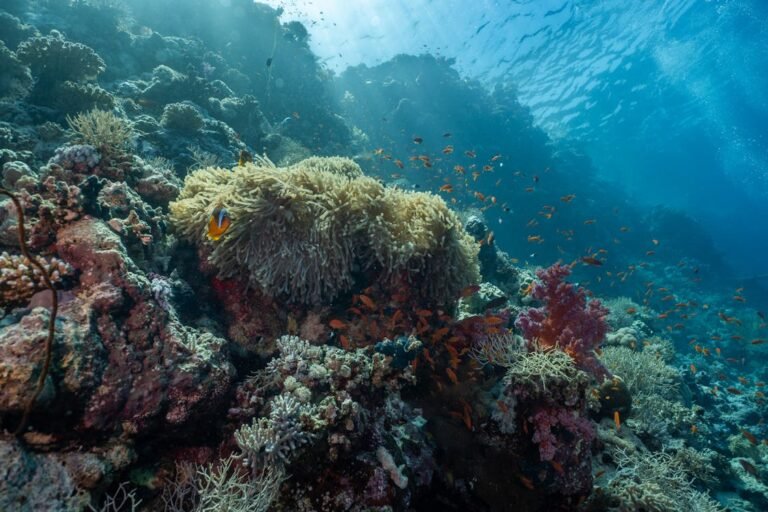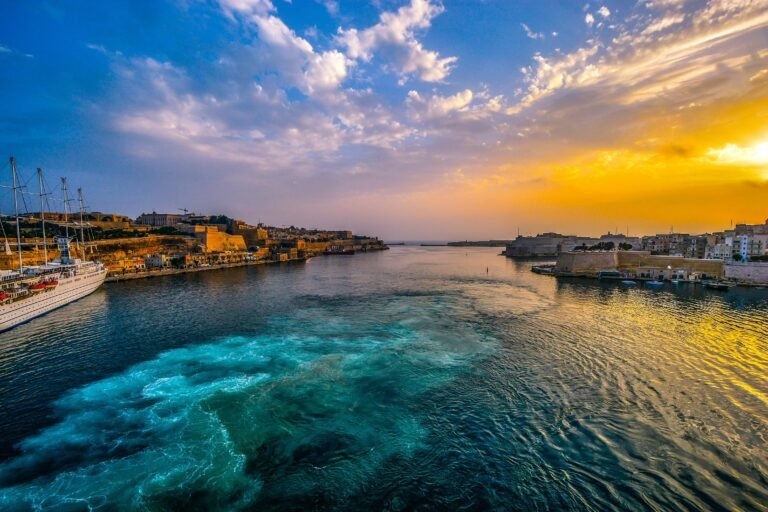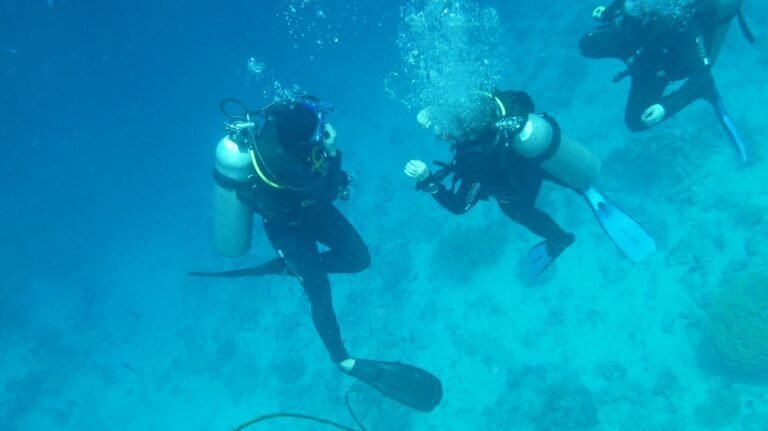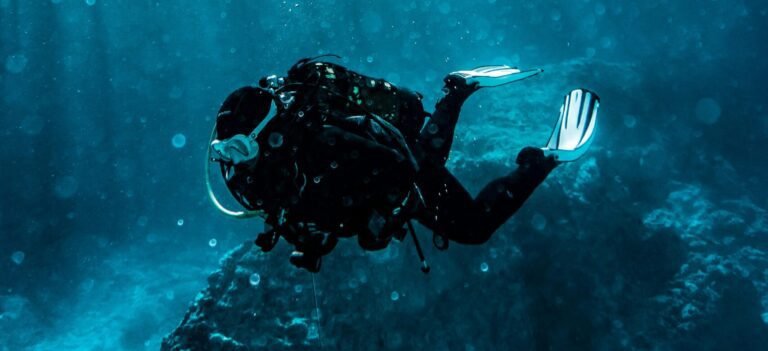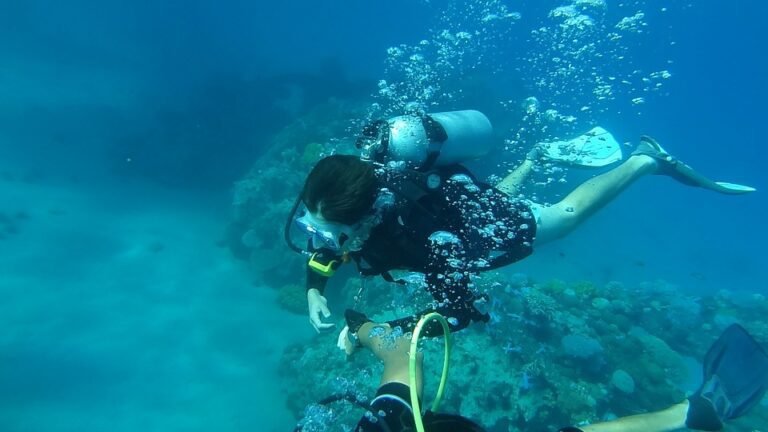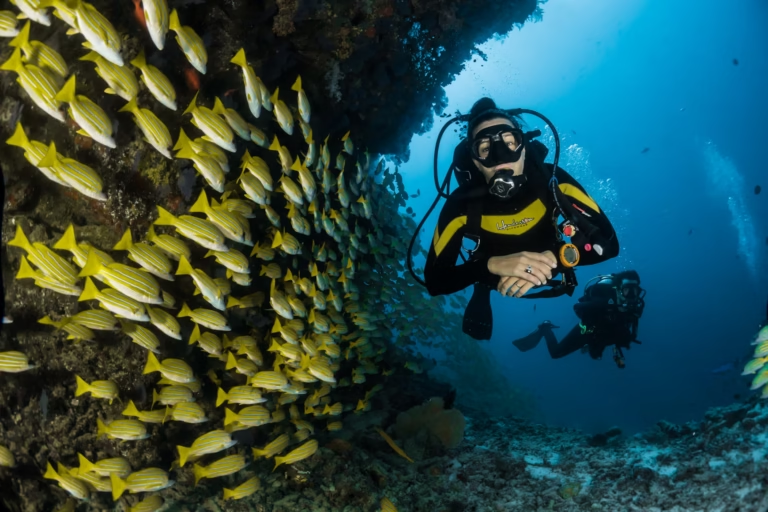The Best Scuba Diving Sites Raja Ampat Indonesia

If you’ve ever wanted to dive in one of the most beautiful and untouched places in the world, Raja Ampat is the spot. This group of islands in Indonesia’s West Papua is famous for its stunning coral reefs, clear water, and incredible marine life.
Imagine swimming through colorful coral gardens, surrounded by fish, manta rays, and even reef sharks. Raja Ampat is home to more sea creatures than almost anywhere else on the planet.
In this guide, I’ll share everything you need to know to plan your trip: the best dive spots, when to visit, what marine life to expect, and tips to make your experience safe and responsible.
Let’s jump in.
Why Raja Ampat Is a World-Class Scuba Diving Destination
Raja Ampat isn’t just another dive spot; it’s a global treasure. Located in the heart of the Coral Triangle, this region is celebrated for its extraordinary biodiversity, untouched reefs, and thriving marine ecosystems.
Here’s why Raja Ampat stands out as a world-class diving destination:
A Location Like No Other
- Where: Raja Ampat lies off the northwest tip of West Papua, Indonesia. It encompasses over 1,500 islands, cays, and shoals, with four main islands—Misool, Salawati, Batanta, and Waigeo.
- What Makes It Special: Situated at the intersection of the Pacific and Indian Oceans, it’s a hub of nutrient-rich waters, fueling life in every direction. The remote location means fewer crowds and pristine conditions.
Unmatched Marine Biodiversity
Raja Ampat is a biological marvel. Here’s a glimpse of what makes it so special:
- Fish Species: Over 1,500 species call these waters home, including reef fish, pelagics, and even rare species.
- Corals: The region is home to 75% of the world’s coral species, with more than 550 types thriving here.
- Macro Life: From pygmy seahorses to nudibranchs, the tiny critters are just as spectacular as the big fish.
- Ecosystem Variety: Dive through coral gardens, mangroves, and even walls covered in sponges and sea fans.
Fun Fact: Raja Ampat has more marine species than the entire Caribbean Sea!
Diving for Every Skill Level
Whether you’re just starting or have years of experience, there’s a dive site for you:
- Beginner-Friendly Sites: Shallow, calm waters at spots like Arborek Jetty or Melissa’s Garden.
- Thrilling Advanced Dives: Drift through strong currents at Blue Magic or Cape Kri, where big fish action is almost guaranteed.
- Snorkeling Paradise: The reefs are so vibrant and shallow in some areas that snorkelers can enjoy the underwater beauty too.
Raja Ampat’s diverse sites ensure there’s always something new to discover, no matter your experience level.
A Commitment to Conservation
Raja Ampat thrives because of the efforts to protect it:
- Marine Protected Area: Much of Raja Ampat falls under conservation zones, ensuring sustainable tourism.
- Marine Park Fees: Visitors contribute to local conservation efforts through entry fees, which fund reef preservation and community programs.
- Eco-Friendly Diving: Many operators promote responsible diving practices and work with locals to minimize environmental impact.
When you dive in Raja Ampat, you’re helping preserve one of the most biodiverse marine regions on the planet.
Raja Ampat offers a combination of stunning underwater landscapes, unmatched biodiversity, and sustainable diving practices. It’s a place where every dive feels like a gift from nature.
Top Dive Sites in Raja Ampat
Cape Kri
Cape Kri is situated near the island of Kri in the central part of Raja Ampat, within the Dampier Strait. This location makes it a favorite among liveaboard itineraries and dive resorts in the region due to its accessibility and extraordinary marine life.
Why It’s Famous
Cape Kri holds the world record for marine biodiversity in a single dive, with over 374 fish species documented by marine biologist Dr. Gerry Allen.
This underwater metropolis is teeming with activity—schools of trevallies and barracudas dart around while reef sharks glide along the depths.
The nutrient-rich currents here are what make this site so lively, offering a chance to witness a true spectacle of nature.
Marine Life Highlights
- Large Fish Schools: Trevallies, fusiliers, barracudas, and snappers form dense, swirling formations.
- Sharks: Blacktip and whitetip reef sharks are often spotted patrolling the area.
- Special Encounters: Look out for Napoleon wrasse, giant trevallies, and, during the right season, manta rays.
Coral and Reef Structure
Cape Kri is not just about the fish—its reef system is equally impressive. The dive site features a vibrant mix of hard and soft corals, sea fans, and sponges.
These corals support a thriving ecosystem, making it an ideal spot for underwater photography and biodiversity lovers.
Diving Conditions
- Currents: The currents at Cape Kri are strong and nutrient-rich, which is why marine life flourishes here. Drift diving is common, and a reef hook can be helpful for staying in one spot to observe the action.
- Visibility: Visibility is typically excellent, often exceeding 25 meters, offering a clear view of the underwater spectacle.
- Depth Range: Most of the action takes place between 10 and 25 meters, though the reef extends deeper.
Who It’s For
Cape Kri is best suited for intermediate to advanced divers due to its strong currents. Confident beginners can still dive here with an experienced guide who knows how to navigate the conditions safely.
Why You’ll Love It
Diving at Cape Kri feels like stepping into an underwater metropolis. The sheer volume of fish, coupled with the vibrant coral backdrop, creates a dive experience that’s as thrilling as it is beautiful.
It’s the perfect site for divers who want to witness marine life at its most abundant and dynamic.
Manta Sandy
Manta Sandy is located in the Dampier Strait, not far from Arborek Island. This shallow dive site is one of Raja Ampat’s most iconic spots and is particularly popular for its reliable manta ray encounters.
Why It’s Famous
Manta Sandy is best known as a cleaning station for reef and oceanic manta rays. These graceful giants gather here to have their skin and gills cleaned by small fish, such as cleaner wrasses.
Divers can kneel on the sandy seabed and watch the mantas glide overhead, providing one of the most serene and awe-inspiring experiences underwater.
Marine Life Highlights
- Manta Rays: Both reef mantas and the larger oceanic mantas are frequently seen at this site.
- Cleaning Station Activity: Cleaner wrasses and butterflyfish tend to the mantas, creating a mesmerizing interaction.
- Additional Marine Life: Wobbegong sharks resting on the sand, colorful reef fish, and occasional sightings of bumphead parrotfish.
Coral and Reef Structure
The sandy bottom of this site is interspersed with coral bommies (small coral heads), which serve as cleaning stations for the mantas.
Around the edges, patches of vibrant reef create a beautiful contrast with the sandy seabed, providing habitat for smaller reef fish and macro life.
Diving Conditions
- Currents: Currents are typically mild, making this site accessible to divers of all levels. The calm environment allows for easy observation of the mantas without being swept away.
- Visibility: Visibility generally ranges from 15 to 20 meters, ensuring a clear view of the action.
- Depth Range: The site is relatively shallow, with a depth range of 5 to 18 meters, allowing for extended dives and plenty of observation time.
Who It’s For
Manta Sandy is perfect for divers of all levels, including beginners. The shallow depth and mild currents make it ideal for long, relaxed dives, while experienced divers can enjoy the opportunity to observe and photograph manta rays up close.
Why You’ll Love It
Manta Sandy offers a peaceful yet thrilling experience. Watching manta rays glide effortlessly through the water while they interact with the cleaning stations is unforgettable.
For underwater photographers, this site is a dream, providing clear and consistent opportunities to capture these majestic creatures in their element.
Blue Magic
Blue Magic is located in the Dampier Strait, close to the island of Kri. This submerged pinnacle dive site is a magnet for marine life, drawing divers from all over the world for its big pelagic species and thrilling underwater action.
Why It’s Famous
Blue Magic is celebrated as a hotspot for large pelagic species and high-energy dives. This pinnacle, which rises to about 7 meters below the surface, attracts a stunning variety of marine life, including manta rays, sharks, and massive schools of fish.
For experienced divers, it’s a must-visit for its adrenaline-pumping currents and unforgettable marine encounters.
Marine Life Highlights
- Oceanic Manta Rays: These majestic creatures are frequently spotted gliding through the currents.
- Schooling Fish: Expect to see large schools of fusiliers, snappers, and barracudas.
- Sharks: Regular sightings of blacktip, whitetip, and even grey reef sharks.
- Special Encounters: Wobbegong sharks, tuna, and occasionally the elusive hammerhead shark.
Coral and Reef Structure
The pinnacle is encrusted with colorful hard and soft corals, sea fans, and sponges. The reef provides shelter for smaller reef species and a striking backdrop for the larger marine life that frequents the site.
The coral growth and overall health of the reef make Blue Magic as visually stunning as it is action-packed.
Diving Conditions
- Currents: Strong, nutrient-rich currents are a defining feature of Blue Magic. These conditions bring in pelagic species but require divers to have solid buoyancy and comfort in drift diving.
- Visibility: Visibility is typically excellent, ranging from 20 to 30 meters, providing a clear view of the bustling activity around the pinnacle.
- Depth Range: The site ranges from 7 to 30 meters, with most of the action occurring between 15 and 25 meters.
Who It’s For
Blue Magic is best suited for advanced or experienced divers due to the strong currents and deeper depths. Confident intermediate divers can also enjoy this site under the guidance of a skilled dive operator.
Why You’ll Love It
Blue Magic offers high-energy diving at its best. The combination of big pelagic species, vibrant corals, and dynamic underwater conditions creates an unforgettable experience.
For divers who thrive on action-packed dives, this site delivers excitement and beauty in equal measure.
Arborek Jetty
Arborek Jetty is located near Arborek Island, in the heart of Raja Ampat’s Dampier Strait. This charming village jetty is one of the easiest dive sites to access and is a favorite among both divers and snorkelers.
Why It’s Famous
Arborek Jetty is renowned for its vibrant coral growth beneath the structure and its incredible macro life.
The jetty’s pillars are draped in colorful soft corals, creating a stunning underwater garden that attracts a wide range of marine life.
For photographers, it’s a dream location offering both macro and wide-angle opportunities.
Marine Life Highlights
- Schooling Fish: Dense schools of glassfish and fusiliers create mesmerizing patterns around the jetty.
- Macro Life: Pygmy seahorses, pipefish, and nudibranchs are commonly found here.
- Special Encounters: Wobbegong sharks often rest beneath the jetty, and the occasional turtle or stingray might pass by.
Coral and Reef Structure
The jetty is encrusted with soft corals and sponges, making it one of the most visually striking dive sites in Raja Ampat. Surrounding the jetty, the shallow seabed is dotted with coral bommies that house an array of smaller reef species.
The combination of artificial structures and natural coral reefs creates a unique underwater environment.
Diving Conditions
- Currents: Currents are usually mild, making this site suitable for relaxed dives and macro exploration.
- Visibility: Visibility is often excellent, ranging from 15 to 20 meters, depending on the conditions.
- Depth Range: The site ranges from just 1 to 15 meters, allowing for long, leisurely dives.
Who It’s For
Arborek Jetty is ideal for all skill levels. Beginners will appreciate the calm conditions and shallow depths, while experienced divers can focus on the rich macro life and stunning coral formations.
Snorkelers will also enjoy the vibrant marine life close to the surface.
Why You’ll Love It
Diving at Arborek Jetty feels both serene and vibrant. The combination of colorful corals, playful fish schools, and hidden macro treasures makes it a unique and rewarding experience.
Beyond the dive, the welcoming village on Arborek Island adds a cultural touch to the adventure, making it a perfect spot for both underwater exploration and connecting with local life.
Melissa’s Garden
Melissa’s Garden is located near the island of Penemu, in the northwest region of Raja Ampat. It is a remote dive site accessible via liveaboards or day trips from nearby islands and is widely regarded as one of the most beautiful coral gardens in the world.
Why It’s Famous
Melissa’s Garden is famous for its expansive, pristine coral reefs, which host an extraordinary variety of marine life.
The site is a photographer’s paradise, offering one of the most vibrant and untouched coral ecosystems in Raja Ampat.
The calm waters and stunning scenery make it a favorite for divers seeking a tranquil yet visually captivating experience.
Marine Life Highlights
- Reef Fish: Colorful anthias, damselfish, and butterflyfish fill the water column.
- Turtles: Green and hawksbill turtles are often spotted feeding or resting on the reef.
- Macro Life: Pygmy seahorses, nudibranchs, and tiny shrimp are common in the coral.
- Occasional Visitors: Reef sharks and Napoleon wrasse are sometimes seen cruising along the reef.
Coral and Reef Structure
Melissa’s Garden features a breathtaking expanse of hard and soft corals, with a diversity that’s rarely seen elsewhere. Massive coral bommies rise from the seabed, creating a layered reefscape that is teeming with life.
The health and density of the corals are unparalleled, offering a kaleidoscope of colors and textures that stretch as far as the eye can see.
Diving Conditions
- Currents: The currents here are generally mild, making it an easy and enjoyable dive for all skill levels.
- Visibility: Visibility typically ranges from 20 to 30 meters, allowing divers to fully appreciate the coral gardens and marine activity.
- Depth Range: The site spans depths from 5 to 20 meters, perfect for long dives and capturing vivid underwater photos.
Who It’s For
Melissa’s Garden is suitable for divers of all levels. The shallow depths and calm conditions make it a great choice for beginners, while experienced divers and underwater photographers will appreciate the sheer beauty and biodiversity of the site.
Why You’ll Love It
Diving at Melissa’s Garden feels like entering a natural masterpiece. The vibrant corals, abundant marine life, and peaceful atmosphere make it a magical experience.
Whether you’re admiring the colorful reef fish or exploring the intricate details of the coral formations, every moment here is unforgettable.
Marine Life You’ll Encounter in Raja Ampat

Raja Ampat is one of the most biodiverse places on Earth. From giant manta rays to tiny seahorses, the waters here are full of surprises. No matter your level of diving experience, you’re bound to see something incredible on every dive.
Big Marine Animals
- Manta Rays: These graceful giants are often seen at cleaning stations like Manta Sandy. Watching them swim overhead is unforgettable.
- Reef Sharks: Blacktip, whitetip, and wobbegong sharks are common in Raja Ampat. Wobbegongs are often found resting on the seabed.
- Schooling Fish: Huge schools of jackfish, barracuda, and fusiliers move in unison, creating mesmerizing underwater displays.
- Napoleon Wrasse: These large, curious fish are occasional visitors that add excitement to any dive.
Colorful Reef Creatures
- Reef Fish: You’ll see plenty of butterflyfish, damselfish, and anthias darting around the corals.
- Turtles: Both green and hawksbill turtles are frequently spotted grazing or gliding peacefully by.
- Parrotfish: Known for their vibrant colors, parrotfish play a big role in keeping the reef healthy.
Tiny Critters
- Pygmy Seahorses: These tiny, camouflaged creatures cling to sea fans and are a treat for those who can spot them.
- Nudibranchs: These colorful sea slugs are a favorite for macro photographers and are found all over Raja Ampat.
- Pipefish and Frogfish: These small and well-hidden species add an element of surprise to your dives.
Seasonal Marine Life
- Manta Ray Season (October–April): This is the best time to see large numbers of manta rays at cleaning stations and feeding grounds.
- Whale Sharks: Though rare, whale shark sightings do happen, especially near Misool or during liveaboard trips.
The marine life in Raja Ampat is so diverse that no two dives are ever the same. Whether you’re looking for massive pelagics or tiny critters, there’s something here for everyone.
Best Time to Dive in Raja Ampat

Raja Ampat offers great diving year-round, but the conditions can vary depending on the season. Knowing the best time to visit can help you plan a smoother, more rewarding trip.
Dry Season (October to April)
- Conditions: The dry season is the most popular time to dive. The seas are calmer, and visibility is excellent, often exceeding 20–30 meters.
- Marine Highlights: This is the best time to see manta rays, as they gather at cleaning stations like Manta Sandy in large numbers.
- Weather: Warm and sunny days are common, with only occasional rain.
Rainy Season (May to September)
- Conditions: Rainy season brings rougher seas and stronger winds, which can make some dive sites harder to access. However, it’s still possible to dive in sheltered areas.
- Marine Highlights: While mantas are less frequent, the reefs are less crowded, offering a more peaceful experience.
- Weather: Expect more rainfall and overcast skies, but the underwater scenery remains vibrant.
When’s the Best Time to Visit?
The dry season (October to April) is the ideal time for most divers, especially if you’re hoping to see manta rays and enjoy the calmest conditions. However, if you prefer fewer people and don’t mind some rain, the rainy season can still be a great option.
The timing of your trip depends on what you want to experience, but one thing’s for sure—Raja Ampat is incredible no matter when you visit.
Tips for Scuba Diving in Raja Ampat

Diving in Raja Ampat is an unforgettable experience, but preparation is key to making the most of your trip.
Here are some practical tips to help you dive safely and responsibly in this world-class destination.
Choosing a Dive Operator
- Liveaboards: If you want to reach remote dive sites like Melissa’s Garden or Blue Magic, liveaboards are your best bet. They offer multi-day trips with onboard accommodation and meals.
- Sustainability Matters: Look for operators that prioritize eco-friendly practices and work with local communities. This helps support conservation efforts.
- Local Dive Resorts: For land-based options, choose resorts near the Dampier Strait, where many top dive sites are located.
Equipment and Safety Tips
- Bring Your Own Gear (If Possible): While rental gear is available, having your own ensures a comfortable fit and familiarity.
- Use a Reef Hook: Drift dives are common in Raja Ampat, and a reef hook can help you stay stable without touching the coral.
- Check Your Certification: Some sites, like Blue Magic, have strong currents and are best suited for advanced divers. Make sure your skills match the site conditions.
Dive Certifications
- Advanced Certification Recommended: To fully enjoy Raja Ampat’s deeper or current-heavy sites, an Advanced Open Water certification is ideal.
- Beginners Welcome: Sites like Arborek Jetty or Melissa’s Garden are perfect for beginners with just a basic Open Water certification.
Pack Essentials for Diving in Raja Ampat
- Reef-Safe Sunscreen: Protect your skin without harming the corals.
- Surface Marker Buoy (SMB): Strong currents can carry divers, so an SMB ensures you’re visible to your boat crew.
- Travel Insurance: Make sure your policy covers scuba diving, especially in remote areas like Raja Ampat.
Following these tips will not only enhance your dive experience but also help you stay safe and protect the pristine marine environment.
Conclusion
Raja Ampat is a paradise for anyone who loves the ocean. Whether you’re diving with manta rays or snorkeling vibrant coral reefs, it’s an unforgettable experience for all skill levels.
Visit between October and April for calm seas and a better chance to see mantas, but it’s incredible any time of year. Just remember to dive responsibly, support eco-friendly operators, and respect the locals to help protect this special place.
Raja Ampat is waiting—don’t miss it.

